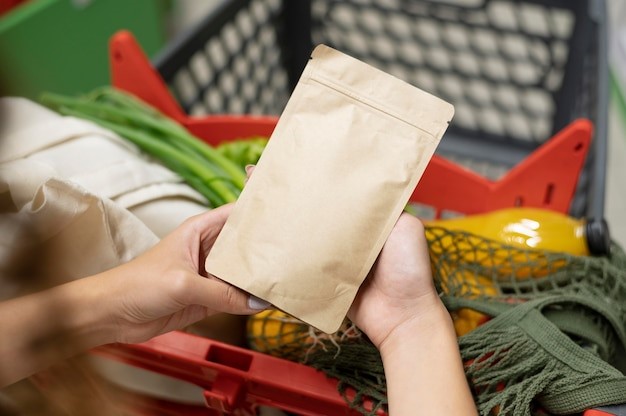Flexible Packaging Design: Balancing Aesthetics, Functionality, and Brand Identity

Imagine you’re at your favorite store, navigating aisles brimming with products. You reach out, not because something screamed for your attention, but because its packaging subtly, yet effectively, caught your eye. For brand managers and marketing professionals in the B2B segment, understanding the art of flexible packaging design can make that difference. It’s about creating a perfect balance between aesthetics, functionality, and brand identity.
The Flexible Packaging Revolution
Flexible packaging has revolutionized the way products are presented. From snack pouches to resealable coffee bags, its versatility and innovation are transforming the packaging landscape, with the market expected to reach $382.61 billion by 2030. But what makes flexible packaging so appealing? It’s the ability to combine visual allure, practical functionality, and a strong brand identity into one cohesive package.
The Power of Aesthetics
First impressions matter, especially in packaging. The aesthetic appeal of a product can be the hook that grabs a consumer’s attention. Flexible packaging services offer a vast array of customization options, allowing brands to create visually striking packages. Whether it’s vibrant colors, unique shapes, or intricate designs, the goal is to make the packaging stand out on the shelf.
But aesthetics aren’t just about being flashy. The design must resonate with your target audience. For example, a minimalist design with eco-friendly colors might appeal to sustainability-focused consumers, while bold, energetic designs could attract a younger demographic. It’s about understanding who your audience is and what will appeal to them.
Functionality: Beyond the Looks
While aesthetics draw customers in, functionality ensures they stay. Think about the frustration of opening a poorly designed package—spilling contents everywhere or struggling with resealing. Such issues can detract from the overall experience.
Custom flexible packaging focuses on practical aspects tailored to the product’s needs. Features like resealable zippers, spouts for easy pouring, or stand-up pouches enhance the user experience. These functional elements not only improve convenience but also ensure product longevity and freshness.
Embodying Brand Identity
Packaging is more than just a container; it’s a storyteller. It should convey your brand’s values and mission. In the B2B context, packaging needs to demonstrate quality and reliability to both retailers and end consumers.
Consider KIND Snacks as an example. Their transparent packaging not only showcases the product but also reflects their commitment to healthy, natural ingredients. This transparency builds trust and reinforces the brand’s identity with every purchase.
Leveraging Technology
In today’s digital age, technology is reshaping packaging design. Advanced printing techniques and innovative materials are opening new doors. QR codes on packaging can lead customers to engaging online content, while smart packaging solutions can monitor freshness, enhancing the overall user experience. Augmented reality (AR) is also emerging as a powerful tool, allowing brands to create interactive packaging experiences that educate and entertain consumers.
Sustainability Matters
Modern consumers are increasingly environmentally conscious, with 74% willing to pay more for sustainable packaging. Flexible packaging companies are innovating with eco-friendly materials like biodegradable films and recyclable plastics. These sustainable practices are not only good for the planet but also attract eco-conscious customers.
Real-World Success Stories
Let’s explore some real-world examples. Method, known for its eco-friendly cleaning products, uses flexible packaging to reduce plastic waste while maintaining a chic, modern design. Their packaging reflects their brand’s sustainability ethos and appeals to environmentally conscious consumers.
Another success story is Stacy’s Pita Chips. Their custom flexible packaging creates a premium feel with a matte finish and elegant design elements, capturing the brand’s upscale positioning and appealing to health-conscious snackers.
In the B2B sector, DuPont’s Tyvek® medical packaging is a prime example of how functionality and brand identity can be seamlessly integrated. Tyvek® offers superior protection for sterile medical devices, while its distinctive texture and appearance instantly communicate quality and reliability to healthcare professionals.
Choosing the Right Partner
Selecting the right flexible packaging service is crucial. It’s not just about finding a supplier but a partner who understands your vision. Look for flexible packaging companies with a proven track record of innovation, quality, and sustainability. While flexible packaging offers numerous advantages, it’s important to consider factors like cost, material sourcing, and recycling infrastructure when making your decision.
Challenges in Flexible Packaging
It’s important to acknowledge the challenges associated with flexible packaging. Costs can be higher compared to traditional packaging methods, and there may be a need for specialized recycling facilities. Additionally, ensuring that the packaging materials meet both functional and aesthetic standards can be complex and require ongoing innovation and adjustment.
Emerging Trends in Flexible Packaging
Staying ahead of the curve is vital. Emerging trends such as the integration of augmented reality (AR) and other interactive elements are enhancing consumer engagement. Imagine scanning a product’s packaging to unlock a virtual experience or gain instant access to detailed product information. These innovations are not just futuristic—they are becoming a present reality.
Conclusion and Call to Action
The secret to successful flexible packaging design lies in balancing aesthetics, functionality, and brand identity. It’s about creating packaging that not only looks good but also performs well, tells your brand’s story, and resonates with your target audience. By partnering with the right flexible packaging companies and staying abreast of emerging trends, you can ensure your product stands out, wins customers, and drives business success.
